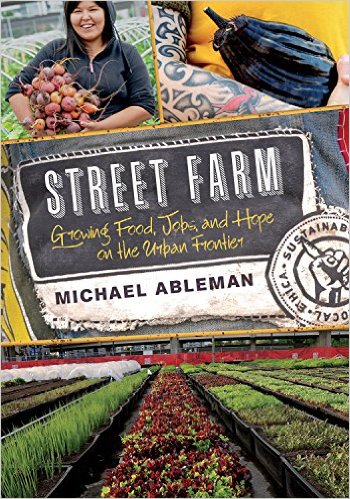 Food security is a foundational cornerstone of resilience, which is why here at Peak Prosperity we recommend sourcing a substantial percentage of your food calories locally. Buy from nearby sustainable farms and, if at all possible, grow some of your own food yourself.
Food security is a foundational cornerstone of resilience, which is why here at Peak Prosperity we recommend sourcing a substantial percentage of your food calories locally. Buy from nearby sustainable farms and, if at all possible, grow some of your own food yourself.
While many of our readers are now doing exactly this, we commonly hear how difficult it can be to follow these steps for those living in the suburbs or large cities.
Today, we welcome Michael Ableman to the program to share a successful urban agriculture model he's helped to pioneer. Michael is the founder of the non-profit Center For Urban Agriculture, and has recently authored the book Street Farm: Growing Food, Jobs, and Hope on the Urban Frontier -- which focuses on his efforts to transform acres of vacant and contaminated land in one of North America's worst urban slums and grow artisan-quality fruits and vegetables.
In today's discussion, Michael walks us through how farming in our cities is indeed possible. In fact, it not only results in healthier foods, but in healthier communities, too:
Our Sole Food Street Farm started when I received a phone call, eight or nine years ago, asking me to attend a meeting in Vancouver on the downtown eastside. The downtown eastside is a distressed neighborhood where the term “Skid Row” was coined. The invitation was to meet with several social service agencies in the neighborhood to discuss some interesting strategies for helping people in that community -- the entire neighborhood is almost entirely inhabited by folks who are dealing with some form of long-term addiction, mental illness, and certainly, high levels of material poverty.
The group of people meeting had access to a half acre parking lot next to one of the dive hotels, and we decided there was a desire to do something agricultural. We decided that the most important thing that we could achieve was to try to create a model that developed meaningful work employment; a reason for people to get out of bed each day. And so, we developed that first half acre as a model -- we created a technical system that allowed us to safely grow on either pavement or contaminated land using innovative boxes we designed that isolate the growing medium.
And we eventually expanded to over almost five acres of land on four different sites -- including a production orchard, 16,000 square feet of high tunnel unheated greenhouses, and large open parking lots -- to the point where we’re now producing 25 tons of food annually and employing close to 30 people.
And we now have people employed with us who before had never held a job for longer five or six months, but they’ve been with us now for almost eight years in supervisor positions, having in many ways cleaned up their act, learned new skills, and found some sense of purpose.
Click the play button below to listen to Adam' interview with Michael Ableman (58m:23s).
This is a companion discussion topic for the original entry at https://peakprosperity.com/michael-ableman-urban-agriculture/



